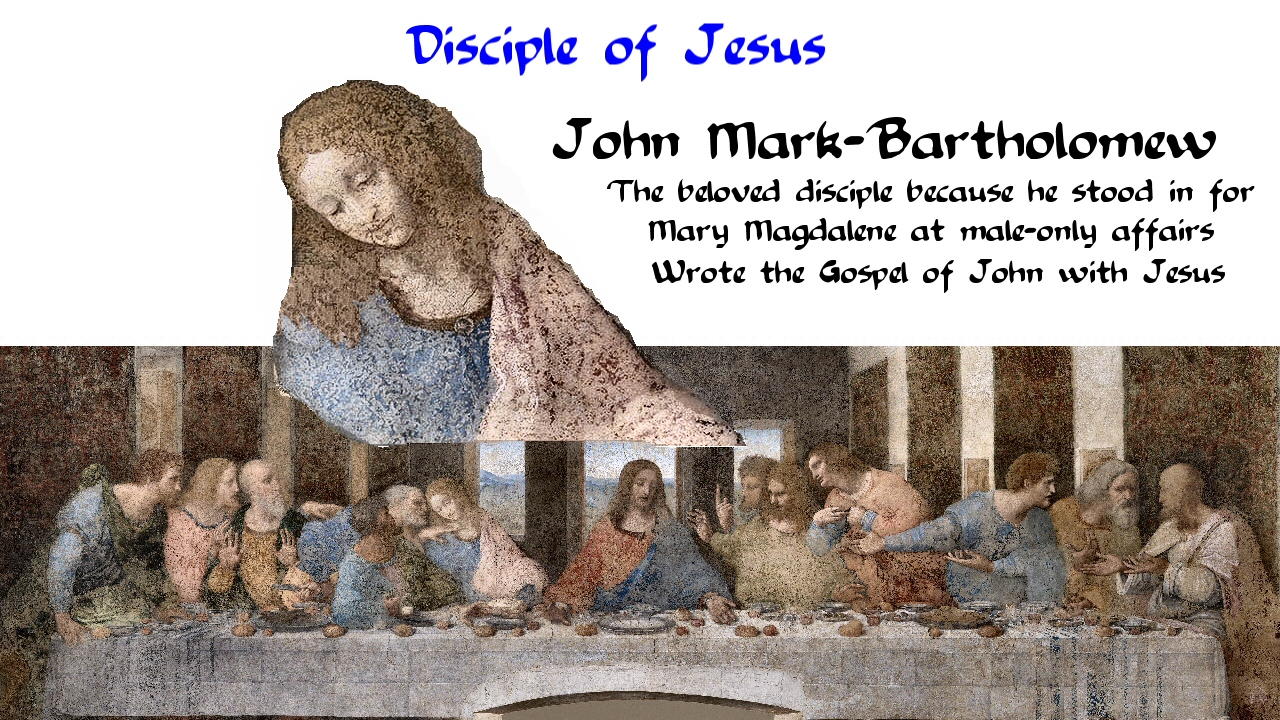A key proponent of the suggestion that John Mark was the beloved disciple is Pierson Parker, “John and John Mark” JBL 79 (1960): 97-110. He makes the following points:
- John Mark lived in Jerusalem (Acts 12:12) where the Fourth Gospel concentrates most of the activity of Jesus and the beloved disciple (97).
- John Mark was related to a Levite named Barnabas (Colossians 4:10; Acts 4:36) and may have mutilated his fingers to get out of his priestly duties (Mark’s Latin prologue in codex Toletanus). The Fourth Gospel is interested in the temple cult, the beloved disciple knows the high priest in John 18:15, and there is the tradition of Polycrates that “John” wore the priestly vestment (98).
- John Mark was a figure of means, befitting a Gospel that does not take as much interest in the poor and the elite circles of the beloved disciple (98).
- John Mark could be host of the last supper (98).
- John Mark was a companion of Paul and there is Pauline influence in the Fourth Gospel, though in the author’s distinct terminology (98-99).
- John Mark was a co-worker of Luke. The distinct agreements between the Gospels of John and Luke, as well as their differing wording and literary contexts, are due to two authors sharing oral traditions when they worked together (99-100).
- Just as Paul reconciled with Barnabas and John Mark after their dispute over Gentile “Judaizing” (cf. Acts 15:37-39; Gal 2:7; Col 4:10), the Fourth Gospel sides with the Gentile view of the controversy (100).
- John Mark ministered among the diaspora and the Fourth Gospel is the sole one to mention Greek-speaking Jews in the diaspora (John 7:35; cf. 12:20) (101).
- John Mark was a companion of Peter (Acts 12:12). The Fourth Gospel goes into the most detail about Peter and the beloved disciple is his constant companion (101).
- There is no reason to suppose (John) Mark waited to be Peter’s “interpreter” until late in Peter’s life (cf. Papias) and the Fourth Gospel aligns with Peter’s preaching in Acts (102).
- The discrepancy over whether (John) Mark wrote a Gospel after Peter’s death (cf. Irenaeus) or during Peter’s lifetime (cf. Clement of Alexandria) is due to the evangelist adding an addendum (John 21) after Peter died (102-3).
- The tradition that John Mark went to Alexandria accords with the Alexandrian theology of the Fourth Gospel (103).
- John Mark visited Ephesus, explaining the tradition of the evangelist John in Ephesus (103).
Parker turns to Papias where he points out that (John) Mark’s substandard order may reflect the Fourth Gospel’s departures from the Synoptic tradition based on his personal recollections (104). Against Papias’s statement that (John) Mark was not a witness of Jesus, Parker cites a line from the Muratorian Canon that “he was present at some events” and argues that Papias defended the Fourth Gospel against its detractors (105). Since Papias ascribes the observation about (John) Mark’s lack of order to the Elder John of Ephesus (note: Parker leans towards seeing the tradition that the Apostle John was in Ephesus as mistaken), John Mark and the Elder John must be separate individuals (110). He closes with one more list about the evangelist:
- He had a home near Jerusalem in John 19:27 (106).
- He was a young man cared for or “loved” by Jesus (106).
- His date for Easter was supported by Christians in Ephesus (106).
- He stresses eyewitness testimony and could be one of the eyewitness “ministers” of the word (cf. Luke 1:2; Acts 13:5) (106).
- He did not rely on written sources besides his memory (106).
- The Fourth Gospel took shape after Peter’s death when John Mark was old (106).
- The Fourth Gospel has a good grasp of Jewish and Pagan though (106-7).
- The Fourth Gospel is similar to Colossians in combating Gnostic ideas.
It could also explain the unanimous tradition that the author of the Gospel was John, even as the various figures named John became confused in the early church (107-8).
This theory coheres with the beloved disciple being an elite Jerusalem follower, but major flaws remain. There is no evidence in the New Testament that John Mark knew Jesus during his lifetime or that the house in Acts 12 was the locale of the last supper and it seems problematic to discern the identity of a character in one text from an entirely separate book (Acts). Papias clearly states that (John) Mark was not a witness like the beloved disciple but a second-hand reporter of Peter, which is why he was not able to get the “order” correct, while the fragmentary line in the Muratorian canon could refer to Peter as the subject. The early church followed Papias in linking Mark or Peter with the second canonical Gospel: Parker is not persuasive in dismissing Justin Martyr (Dialogue 106:3) and, while he notes that Jerome hesitatingly related John Mark of Acts to the second canonical Gospel (Commentary in Philemon 24) (109n.36), 1 Peter 5:13 was the more common proof-text in defending that Gospel’s authorship.





RECENT COMMENTS